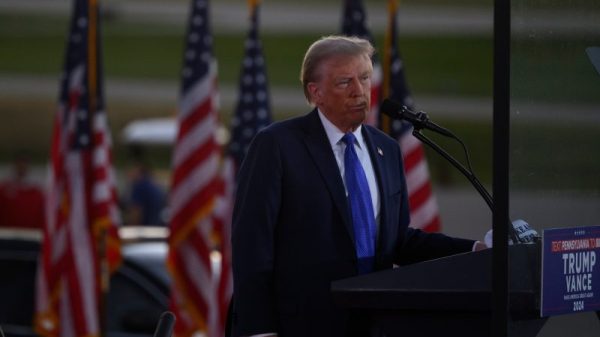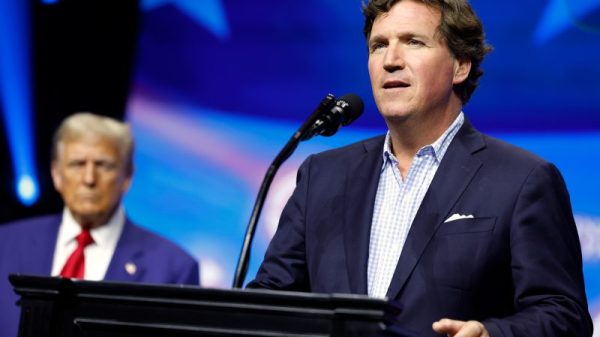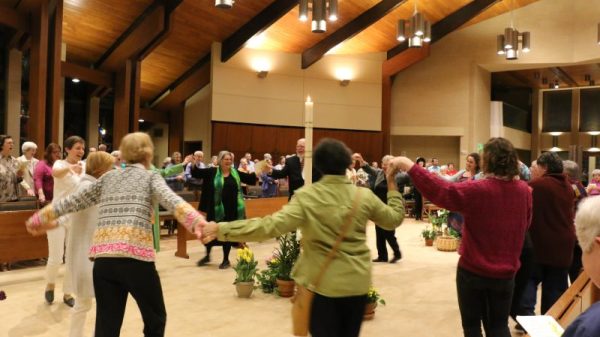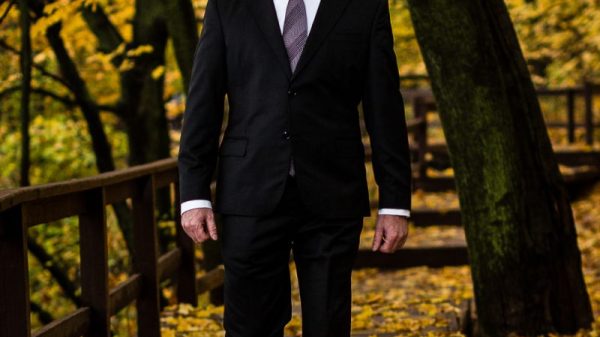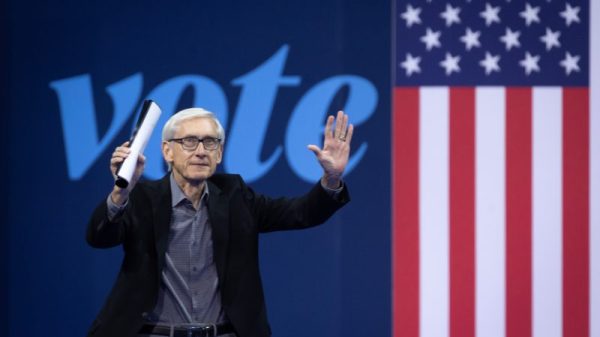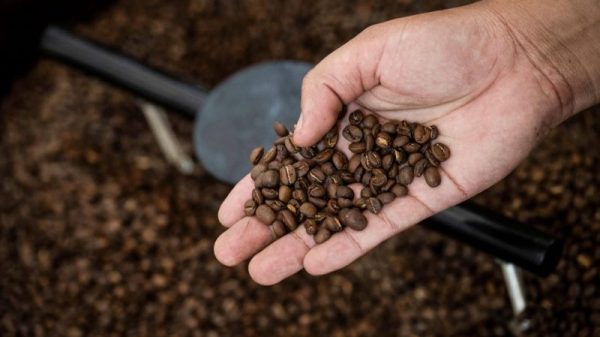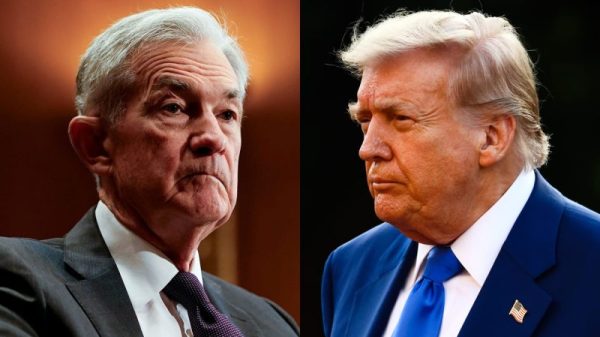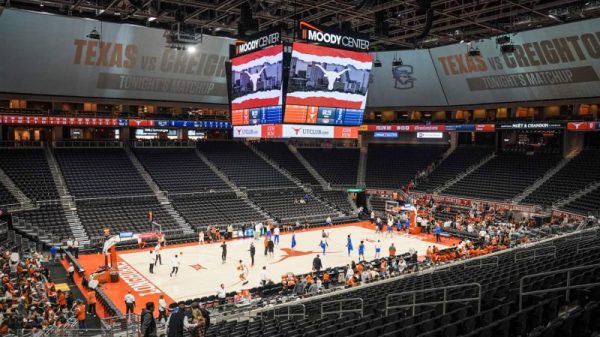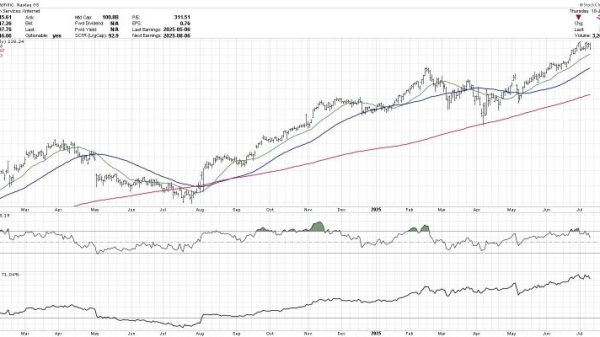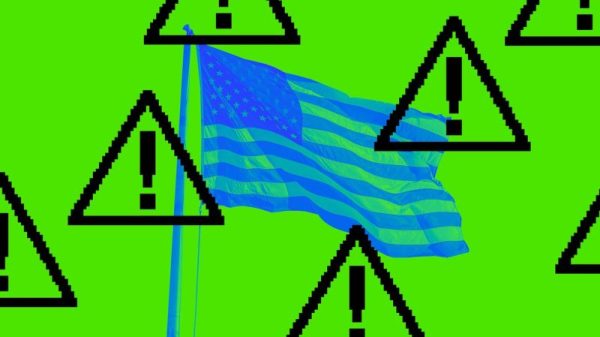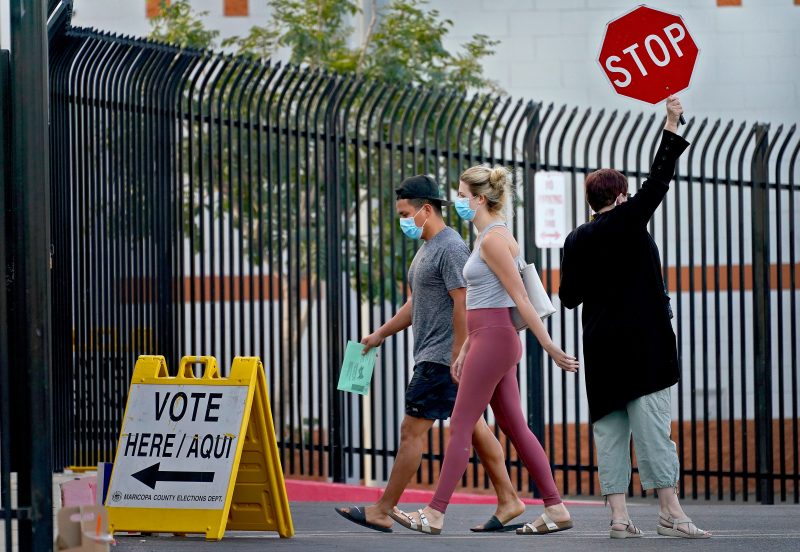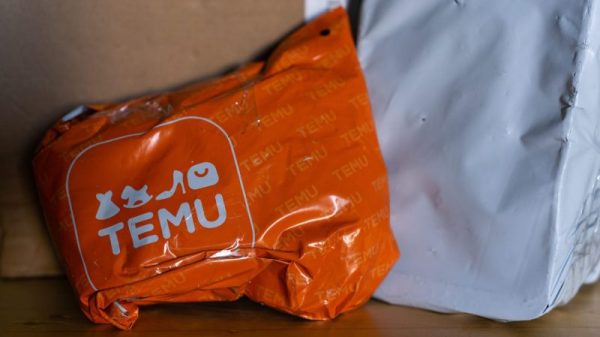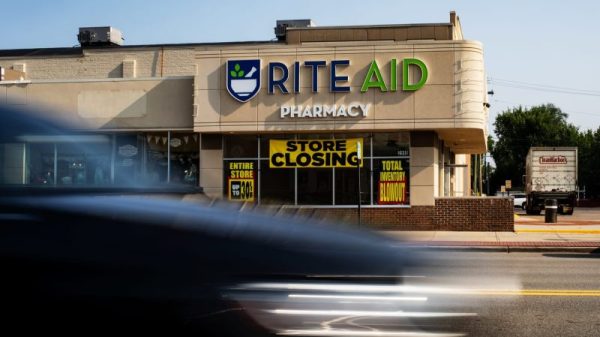PHOENIX — For the first time in as long as anyone can remember, Arizona’s largest public school district isn’t opening its schools to voters as polling sites.
The reasons have been building for years, but the final straw for Mesa Public Schools officials came last November with a small, low-turnout election that became mired in misinformation and menace.
“It was very chaotic,” Assistant Superintendent Scott Thompson recalled. “It was overwhelming.”
Although voting was supposed to be done mostly by mail, mistrust led many voters to drive to the schools to fill out their ballots in person, causing traffic jams and confrontations. Voters confused school staff for election workers and harangued them. Some accused school staff of “disenfranchising voters” for hosting secure ballot drop boxes.
“I couldn’t imagine it in 2024,” Thompson said. “We just don’t know how to make it work.”
For generations, public school gymnasiums, classrooms and cafeterias have been fundamental to American elections. But when voters in Maricopa County — home to Phoenix and more than half of this swing state’s registered voters — show up to make their voices heard in November, chances are, it likely won’t be at a school. Some will instead head to rented-out storefronts. Others to aquatic centers. Or even a funeral home.
In the eight years since Donald Trump was first on the ballot, hundreds of schools throughout this fiercely contested battleground county are no longer willing to assume the risks associated with holding elections. In 2016, 37 percent of county polling locations were schools, according to a Washington Post analysis of data obtained through a public records request. So far this year, it’s 14 percent.
Heightened school safety protocols and sustained attacks on voting systems and the people who run them — largely by Trump and his supporters — have prompted school leaders across America in both red and blue states to close their doors to the democratic process, according to interviews with nearly 20 school district leaders, county officials, school safety officials and election experts. In at least 33 states, the law says public buildings, including schools, can or should be made available as polling locations. In many districts, administrators now cancel classes on Election Day.
The challenge has been especially acute in Arizona, where Trump’s narrow loss in 2020 inspired ceaseless conspiracies, false assertions that his and other GOP losses were illegitimate and death threats against county leaders who oversee voting and the workers on the front lines of running elections. Trump allies like Kari Lake, a Republican who lost her 2022 race for Arizona governor and is now running for the Senate, have empowered self-styled election-fraud detectors who are critical of both elections and the public school system.
Schools in the state can opt out of elections if principals say they don’t have enough space or if the safety of students is at risk. Administrators say there is little upside to taking part in an exercise that can draw divisiveness and intimidating scenes — creating a crisis for election officials who must provide convenient and accessible voting locations.
“In this environment, where you have people with body cameras and weapons that are being brandished, that is a concern — that is intimidating for many people,” said Scott Menzel, superintendent of the Scottsdale school district. “It just takes one flash point to ignite something that’s catastrophic and I absolutely don’t want that to happen on any one of my campuses.”
The trendline endangers the very voting method that Trump and many of his supporters have spent the past four years demanding: in-person voting.
The decline of school participation could confuse voters accustomed to stopping by familiar institutions to vote, experts said, adding an extra step to find a voting center that some people might be unwilling to take. Public schools are often core to the identities of communities big and small, and their proximity to voters and large spaces make them ideal to accommodate crowds and voting equipment.
Maricopa County has had to scramble to find replacements, often resorting to renting privately owned spaces, including those in shopping malls. Officials have budgeted nearly $1 million to lease voting locations this year, up from $53,000 in 2016.
“We cannot provide an in-person voting model without the support of our community,” said Scott Jarrett, a county elections director. “That’s schools, it’s churches, it’s community centers, it’s trusted buildings inside of our communities. It is a civic duty and a responsibility that we all share to make sure that we have a strong democracy.”
Location scouts for democracy
Maricopa County has a three-person team in charge of finding polling sites. They have grown accustomed to hearing the refrain: “Sorry.”
Late last year, they began planning for this year’s presidential election, according to election officials. They spend days driving from one edge of the county’s boundaries to the other. As one of the fastest-growing areas in the nation, new opportunities are literally built every election cycle, and officials said the team scribbles addresses into scouting notebooks.
The team examines records from the county assessor’s website, looking for large properties and contact information. They even stumbled upon retired NBA star Charles Barkley’s home, which seemed large enough to host a site, although election officials said they did not ask him.
The team sizes up everything from building space to parking lots and determines if they meet all sorts of requirements, such as accessibility for those with disabilities. They email and call schools, town halls, commercial building managers and others who previously opened their doors or may consider doing so for the first time.
Ahead of the elections in 2022, they emphasized their “desperate need” of polling places, according to emails reviewed by The Post. This year they’re instead stressing the need for community involvement in democracy.
Many declined, citing parking, insufficient space or no reason at all. Over the past four years, 159 locations stopped serving as sites — including 28 schools, according to The Post’s analysis.
In 2016, schools made up 239 of the county’s 644 polling locations during the general election, according to The Post’s analysis. Four years later, amid the pandemic, the county changed its rules to fully allow voters to cast their ballots at any polling location instead of an assigned precinct, reducing the overall number of locations for the general election to just 175. That year, 27 schools participated.
There has been no rebound, as election officials had hoped: For a July 30 primary, just 31 of 221 polling locations were expected to be schools, as of June 28. General election locations have not yet been finalized but will likely be similar.
“This is people making a cost-benefit analysis,” said Bill Gates, a Republican county supervisor. “The costs are perceived as being greater because it could create issues or bring threats of violence — or even violence. And by hosting a vote center, could they be pulled into a conspiracy? Is it worth it?”
Curtis Finch, a superintendent from a school district north of downtown Phoenix, said he considered hosting a polling site.
“Heck no,” he instinctively thought to himself. “Have you been reading the newspapers lately?”
In 2022, he had to tell a man who showed up with a firearm in this open-carry state that weapons were not allowed on school property, he recalled. And he said belligerent voters yelled at his staff over lines.
“In the old days, it was fun, and people were all excited to come vote — red, blue, green, didn’t matter what your party was, they weren’t yelling and screaming at each other,” Finch said. “It wasn’t a big production. Well, now it’s a big production.”
After weeks of negotiating, Finch agreed to allow a district office to be used as a polling site — only because children can be easily separated from voters, he said. He also offered up a bus parking garage.
“I have been trying to be a good neighbor,” he said.
High state of ‘uncertainty and anxiety’
Over the past two decades, amid school shootings and heightened safety protocols, many schools across the country began bowing out of participating in elections. The covid-19 pandemic in 2020 accelerated the pullback, as administrators worried about the spread of the deadly virus. And amid deepening Republican distrust of institutions and elections, it has been difficult to recruit those schools back, according to school and election officials, and a national report that examined where people vote.
“We’re in the highest state of ambiguity, uncertainty and anxiety around school safety than we’ve ever been in my more than three decades in this field,” said Kenneth Trump, president of National School Safety and Security Services, which consults for school districts. School leaders he works with “are on edge sometimes to the point where, quite honestly, we’re telling people to stop and breathe. To exhale.”
Schools that are able to move polling away from their campuses have done so, but many cannot, often because of state laws requiring that they serve as voting sites if asked. Those school districts have increasingly held staff-only training days on Election Day, he said.
“The schools that have gotten rid of it are happy that they did, and they’re not going back,” Trump said. “Those that still have it will tell you privately, ‘No, I wish it wasn’t here, but we’re stuck with it and we’re doing the best we can.’”
In some counties, the number schools that are hosting polling locations has gone up.
In Florida’s fast-growing Osceola County, some churches, YMCAs and other community institutions view participation in elections as burdensome, exacerbating “polling place deserts,” said Mary Jane Arrington, the county’s supervisor of elections. When they refuse, she said she turns reluctantly to schools, which must participate under Florida law.
“It’s inconvenient all around,” she said. “But unfortunately, other community buildings just aren’t as receptive to us as they used to be.”
In New Jersey, Union County election board administrator Nicole DiRado is also relying more heavily on schools, which can lose state funding if they refuse to host polling places. The overwhelming majority of the county’s 156 polling places this year are schools, DiRado said.
“Look, I get it — I have two kids in public school,” DiRado said. Before she learned their school would be closed, she added, “I thought about keeping them home this year on Election Day.”
Push for civic participation
For all the challenges in Maricopa County, there have been wins.
Over the past four years, 109 new polling locations have emerged, including 15 school-affiliated ones and a large viewing room at a mortuary — although it’s only available on Election Day, election officials said, as it’s needed for funerals most other days.
The newly opened Mountain Park Health Center in a city west of Phoenix was designed to ensure that its community room and parking lot are large enough to accommodate voters. Though that clinic will not be a polling site this year because of election-calendar deadlines, two of its other locations will be.
“People feel healthy and stronger when they’re part of decision-making,” said Dr. John Swagert, the center’s chief executive.
And churches make up a higher proportion of polling places, a trend largely driven by the Church of Jesus Christ of Latter-day Saints, which emphasizes civic participation. The church planned to provide 27 buildings for this year’s primary, as of June 28, a decade high for the Church, according to The Post’s analysis.
“It really comes down to: we cherish the opportunity to live in a country where we have the privilege to vote,” said Candice Copple, the LDS Church’s Arizona spokesperson. “If we can be helpful by making it easier for people to have a nearby location to cast their vote, we’re glad to do so.”
Morse and Natanson reported from Washington.

